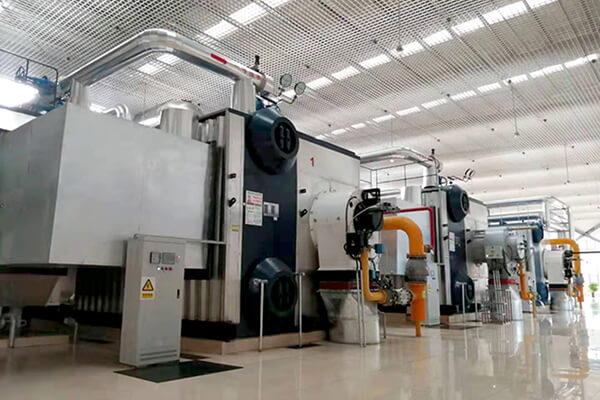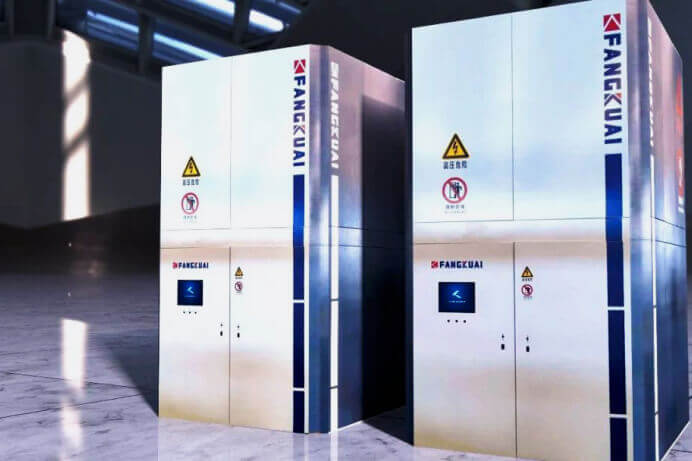Choosing the right industrial steam boiler requires meticulous attention to technical specifications that directly impact performance, safety, and lifecycle costs. This guide dives into three critical areas—combustion efficiency, structural design, and operational safety—to help you make a precise, cost-effective decision.
Steam Boiler Combustion Efficiency: Fuel Type and Heat Recovery Systems
The fuel type and combustion technology define a steam boiler’s efficiency and environmental footprint.
- Natural Gas vs. Biomass:
- Natural Gas: Delivers 95%+ combustion efficiency with low NOx emissions (<30 mg/m³) when paired with FGR (Flue Gas Recirculation). Ideal for industries needing rapid startups (e.g., hospitals requiring 10-minute steam readiness).
- Biomass: Offers lower fuel costs but requires advanced grate systems to handle ash content (15–20% residue). Suitable for industries with onsite biomass waste (e.g., food processing plants).
- Heat Recovery Enhancements:
- Condensing Economizers: Reduce flue gas temperatures to <100°C, reclaiming 10–15% latent heat. For example, Fangkuai’s water tube steam boilers integrate economizers to achieve 104% thermal efficiency.
- Air Preheaters: Boost combustion efficiency by heating incoming air with exhaust gases, cutting fuel use by 5–8%.
Structural Design: Material and Layout Impact on Performance
A boiler’s construction determines durability, maintenance needs, and adaptability to load changes.
- Material Selection:
- ND Steel: Resists hydrogen-induced cracking and sulfur corrosion, extending lifespan to 20+ years in high-moisture environments (e.g., pulp/paper mills).
- Corrugated Furnace Tubes: Increase heat transfer surface area by 30% compared to smooth tubes, reducing fuel consumption in fire tube models.
- Layout Optimization:
- Vertical “D” Type Water Tube Design: Minimizes footprint (e.g., models as compact as 9.5m x 4.2m for 10t/h output) while ensuring rapid steam generation (<5 minutes for 80% load).
- Low Water Volume Systems: Reduce thermal inertia, enabling faster response to demand fluctuations (e.g., textile dyeing plants with variable steam needs).
Operational Safety and Compliance
Safety mechanisms and regulatory compliance are non-negotiable for risk mitigation.
- Critical Safety Features:
- Low-Water Cutoffs: Automatically shut down the steam boiler if water levels drop below safe thresholds, preventing catastrophic failures.
- Pressure Relief Valves: Rated to handle 110% of maximum operating pressure (e.g., 2.75 MPa for a 2.5 MPa boiler).
- Flame Safeguard Systems: Monitor combustion in real-time, triggering alarms for incomplete ignition or flameouts.
- Emission Compliance:
- Thai Regulations: Adhere to NOx limits of <80 mg/m³ for industrial zones. Select steam boilers with staged combustion or SCR (Selective Catalytic Reduction) systems.
- EU Standards: For global operations, ensure boilers meet EN 12953 directives on material integrity and safety testing.
Cost Analysis: Balancing Upfront and Long-Term Expenses
- Fire Tube Steam Boiler vs. Water Tube Steam Boiler:
- Fire Tube Steam Boiler: Lower initial cost (150k for 5–20t/h) but higher maintenance (annual inspections at 5k). Suitable for SMEs with steady demand.
- Water Tube Steam Boiler: Higher upfront investment (500k for 20–50t/h) but 25% lower fuel costs over a decade. Ideal for high-pressure applications like power generation.
- Maintenance Savings:
- Self-Cleaning Systems: Reduce descaling frequency from monthly to quarterly, saving $1.2k/year in chemical costs.
- IoT-Enabled Diagnostics: Predictive maintenance cuts unplanned downtime by 40% (e.g., Fangkuai’s remote monitoring platforms).
Industry-Specific Recommendations
- Pharmaceuticals: Opt for ASME-certified electric boilers with 99% pure steam for sterilization.
- Chemical Plants: Choose thermal oil boilers for processes requiring 300°C+ temperatures without high-pressure risks.
- Breweries: Modular fire tube boilers (e.g., 2x10t/h units) allow staggered operation, aligning with batch processing schedules.
Conclusion
A granular focus on combustion technology, material durability, and compliance ensures your steam boiler aligns with operational demands while maximizing ROI. Partner with manufacturers offering tailored solutions—like Fangkuai’s integrated condensing boilers or ZU HOW’s thermal oil systems—to address niche requirements.
Get your best price
Quickly compare 3 FREE quotes
- Engineer quick quote
- The overall delivery speed is fast
- Financial choice
- Low installation costs and cost savings
25 years+ of boiler R&D
More than 20 innovative technologies



